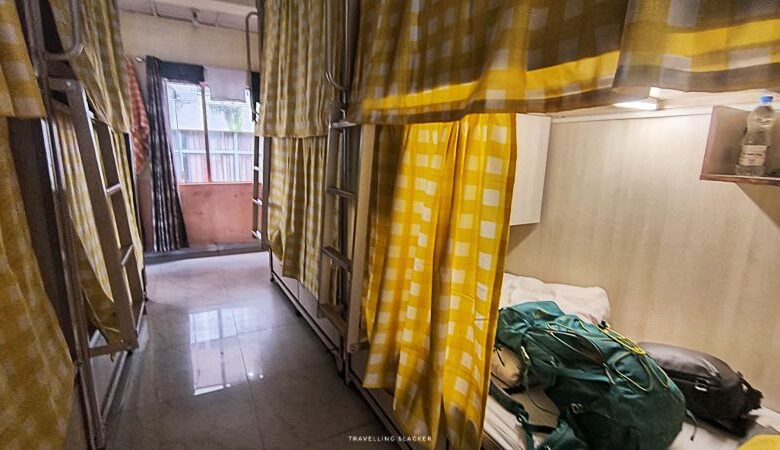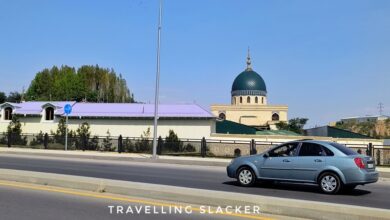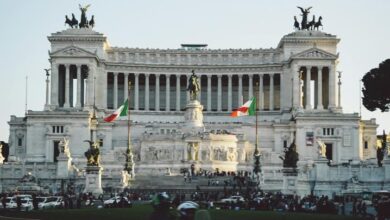Rakchham: Back to the Buckwheats

It’s been more than a decade since my first foray into Kinnaur. Back then, even though I was new to the region and was ill-informed, I’d ended up there at the perfect season and got the best of the post-monsoon season with the best colors, especially at Rakchham where the buckwehat fields were in full bloom. My Sangla to Rakchham post from 2014 still gets good traffic.
Of late the algorithm has forced me to see some interesting reels about Rakchham. One of the viral ones was telling people that if you are tired of Chitkul then you should discover Rakchham. This doesn’t really make sense as you cross Rakchham to reach Chitkul and so, you must have seen it anyway. So, I think I should just do another post on this place based on my last visit.
Shimla to Rakchham
So, this time I wanted to stay right at Rakchham instead of making a day trip from Sangla. I did my usual stopover in Shimla, which is usually expensive and connectivity to the ISBT is a nightmare. However, I found a new and dirt cheap backpacker hostel at Tutikandi itself, barely 500 meters from the ISBT although it required some steep hiking (the bus stand it situated way lower than the city in case you’ve never been there ).

The next morning I went to the bus stand and immediately found a bus leaving towards Peo, with several empty window seats waiting for me. The usual day long trip ensued and eventually I left the bus at the familiar bridge at Karchcham, just to intercept the Chitkul bound bus from Peo. It did have a prolonged stop at Sangla but decided to wait instead of simply staying at Sangla. It was almost 5 PM by the time we started towards Rakchham. A landslide-induced traffic jam delayed my arrival too.




At Rakchham Village
Now, I was a bit jittery because I had delayed my arrival for some reasons. The ogla season is short and sharp. They start harvesting after mid September and nothing remains by the end of the month. It was already past September 20th and I was beginning to wonder if I’d made a mistake.
Anyway, the bus neared Rakcham and also crossed the stretched where I clicked most of my photographs in 2014 but that area seemed empty. Harvesting had began already! However, after sometime, the bus reached Rakchham village and I noticed my homestay right on the right side of the road. I could also see that at least some unharvested plots remaining here.
Some of the locals also maintain small plots which were probably planted late and were still pink. The larger fields were onl the on the other side of the Baspa. the lower parts here had been harvested already. I clicked a few photographs and also took a round inside the village which was lined with mani stones and prayer flags.





I was still unsure about the rest and that night I just kept wondering if I had already delayed the trip a bit too much. The next morning I went to the riverbank after breakfast to click photographs, I coud see empty slops in front of me but a some blooming sunflowers lifted my mood.

I crossed the river and then started hiking up the hills and soon I realised that the fields were not yet harvested here. I was still a bit late, so the pristine pink hue was gone and instead I got what was the reddish brown meadows. Yes, it was not exactly what I wanted, but at least it was not a complete washout!






Buckwheats: Ogla & Fafda
If you are new to my blog you will probably find my narration confusing. Just for the new ones, let me just reiterate that this small stretch around Rakchham traditionally cultivates buckwheat. It blooms from mid August to Mid September usually, when teh slopes turn pink. After that they quickly dry up and are harvested. While it is impossible for the ubtrained eye to differentiate, there are apparently two different types cultivate here, called Ogla & Fafda. I will never be able to tell you which one was which but anyway, they exist.





After harvesting they are ground to get flour, which is used mostly by locals. I have had buckwehat pnacakes in Bhutan but Kunnaur buckwheat was alluding me. However, I soon realised that there is a small room on the grund floor of the building where my stay was. Initially I was just having normal food at his place but after some coversation, he realised my interest and offered me what I exactly needed. It had kind of a coarse texture but I felt it was much lighter than normal wheat flour.

Rakchham Travel Guide
How to reach Rakcham?
Catch any bus going towards Chitkul from Sangla. There are several buses throughout the day. Rakcham is at around the midpoint. In fact, the buses run from Rekong Peo to Chitkul. Make your plans dependong on where you are.
Do remember that the last bus coming back from Chitkul leaves around 4 PM and reaches Rakchham after 5 PM. Keep this mind if you are not staying there and plan to return the same day. Read my Sangla Trave Guide for more details, bus timings, and route map.
Where to stay in Rakcham?

Rakcham has several hotels and homestays by the side of the road. There are small eateries too. You can search online and book beforehand if needed. It is better to call them directly than booking through a site.
Can I visit Rakcham while staying in Sangla?
Yes. You can easily catch a bus in the morning from Sangla, visit the place and come back with the a return bus in the afternoon.
What’s the right time to visit Rakcham ?
Mid Aug to Mid Sept is when the blooms happen. You can visit at other times too but won’t get the pink slopes.



